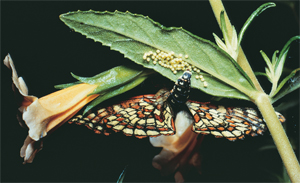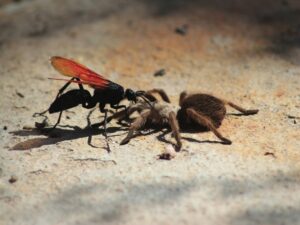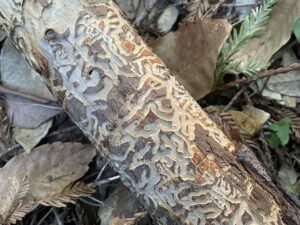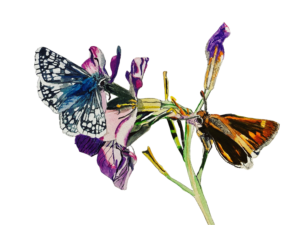A walk with Edward Ross, curator emeritus of entomology at theCalifornia Academy of Sciences, around his Mill Valley home is aninvitation into a fascinating, miniaturized world. Here, the seeminglychoreographed bits of chance and intention that make up a healthyecosystem are revealed in the blooms of the sticky monkey flower (Mimulus aurantiacus)and its varied insect visitors. Here, we show just a few of the manysuch interactions that Ross has captured on film over 58 years at hishillside retreat.
–Dan Rademacher
- The sticky monkey flower is part of a group of shrublike Mimulusspecies adapted to drier climates. The rather rigid leaves exude stickyphenolic resin, which repels most would-be foliage eaters. Larvae ofthe chalcedon, or variable, checkerspot butterfly (Euphydryas chalcedona)are an exception. But as the season heats up, even they can no longereat the increasingly toxic leaves. On cool days and nights, on theother hand, spiderflies may use the flower’s corolla as a “sleepingbag” With the fly immobilized by cold, one can tear away partof the corolla to see the “sleeper” within.

- The chalcedon checkerspot is a common butterfly that, in Mill Valley, stays close to the habitat of it larvae’s favorite food, the sticky monkey flower. (In some areas, larvae occasionally feed on California plantain.) In early spring, the butterfly lays its eggs on the underside of a monkey flower leaf.

.jpg)




